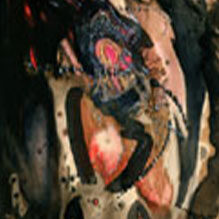Andrew McDonnell
Espanol:
Mucho se ha hablado de independencia serena y autonomía, desde Emerson y Thoreau hasta el ámbito común y menos trascendental de la adulación publicitaria; sin embargo, aunque se habla de independencia y ánimo revolucionario, raramente se encuentran estas cualidades en el arte. En lugar de ello, es moneda demasiado corriente una piedad timorata y ya conocida, envuelta en la máscara rechinante de la moda. La “independencia” se vuelve una virtud de una dependencia culposa de la moda y el capricho, y del expresar la dependiente independencia con actitud de arrogancia y con la indiferencia más exasperada. En el arte actual, como si se tratara de un tributo, hay desafortunadamente demasiado de esta sumisión. El chillón rebaño del arte contemporáneo bala sobre originalidad y liberación chic de la convención, asegurándonos que la modernidad terminó, que el arte está acabado, que no queda belleza alguna para los muertos vivientes. Pero esta revolución es la convención más monótona de todas, que nos aburre con lugares comunes ya mascullados una y otra vez. Estas ovejas negras del arte, como los irritados últimos hombres de Nietzsche, sólo nos dan polución semántica, repitiéndonos que el arte es independiente de la verdad, la belleza y el bien en la buena praxis, y que en el mundo moderno ya no hay más arte moderno. Adulteran el lenguaje y el arte, ratifican una conformidad paralizante y respaldan la idea de que el arte, y más que ningún otro el arte moderno, está gastado, agotado y muerto —que somos independientes de la alegría, libres de traficar cualquier insignificancia estúpida, trivial y fea que el consenso sea capaz de tolerar en su silencioso parloteo.
English: We hear a lot about quiet independence and self-reliance, from Emerson or Thoreau right down to the less transcendental standard sphere of flattering advertisements: but though we hear about independence, and revolutionary temper, in art, we learn of it too rarely. Instead timid customary piety, in the creaky mask of vogue, is too common currency. “Independence” becomes a virtue of sheepish dependence on fashion and whim, and of expressing your dependent independence by arrogant attitudinizing, and the most frantic nonchalance. In today’s art, like taxation, there is unfortunately too much of such compliance. The loud sheep of contemporary art bleat about originality, and their chic freedom from convention, telling us that modernity is over, that art is bankrupt, that there is no beauty left to the breathing dead. But this revolution is the most dreary convention, boring us with commonplaces droned many times before. These black sheep of art, like Nietzsche’s peeved last men, give us semantic pollution, by telling us that art is independent of truth, beauty, and good, in good practice, and that the modern world has no more modern art. They adulterate language and art, they ratify paralyzing conformity, and endorse the notion that art, and modern art most of all, is spent, finished, and dead —that we are independent of joy, free to peddle whatever foolish, trivial, and ugly trifles consensus can suffer in silent chatter.
